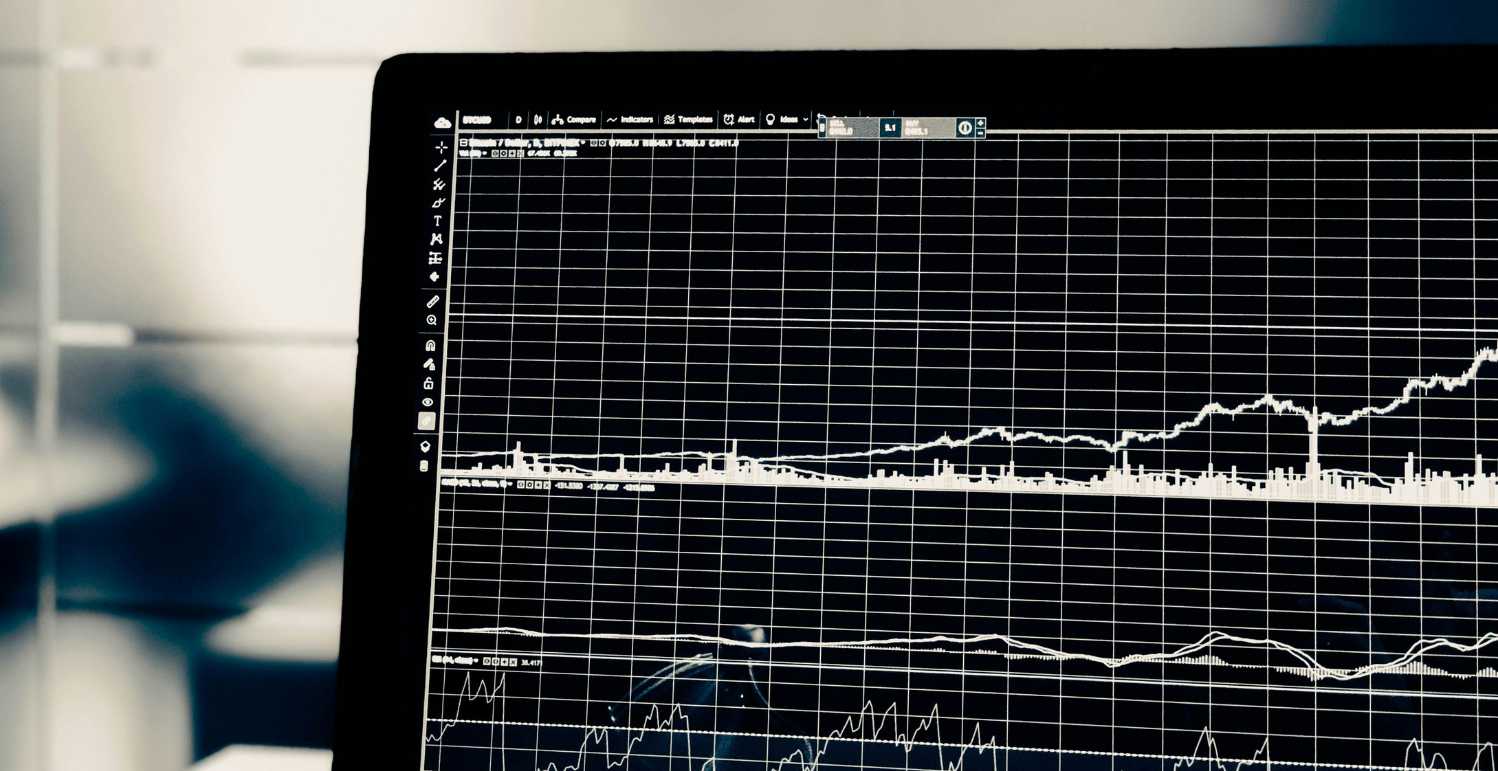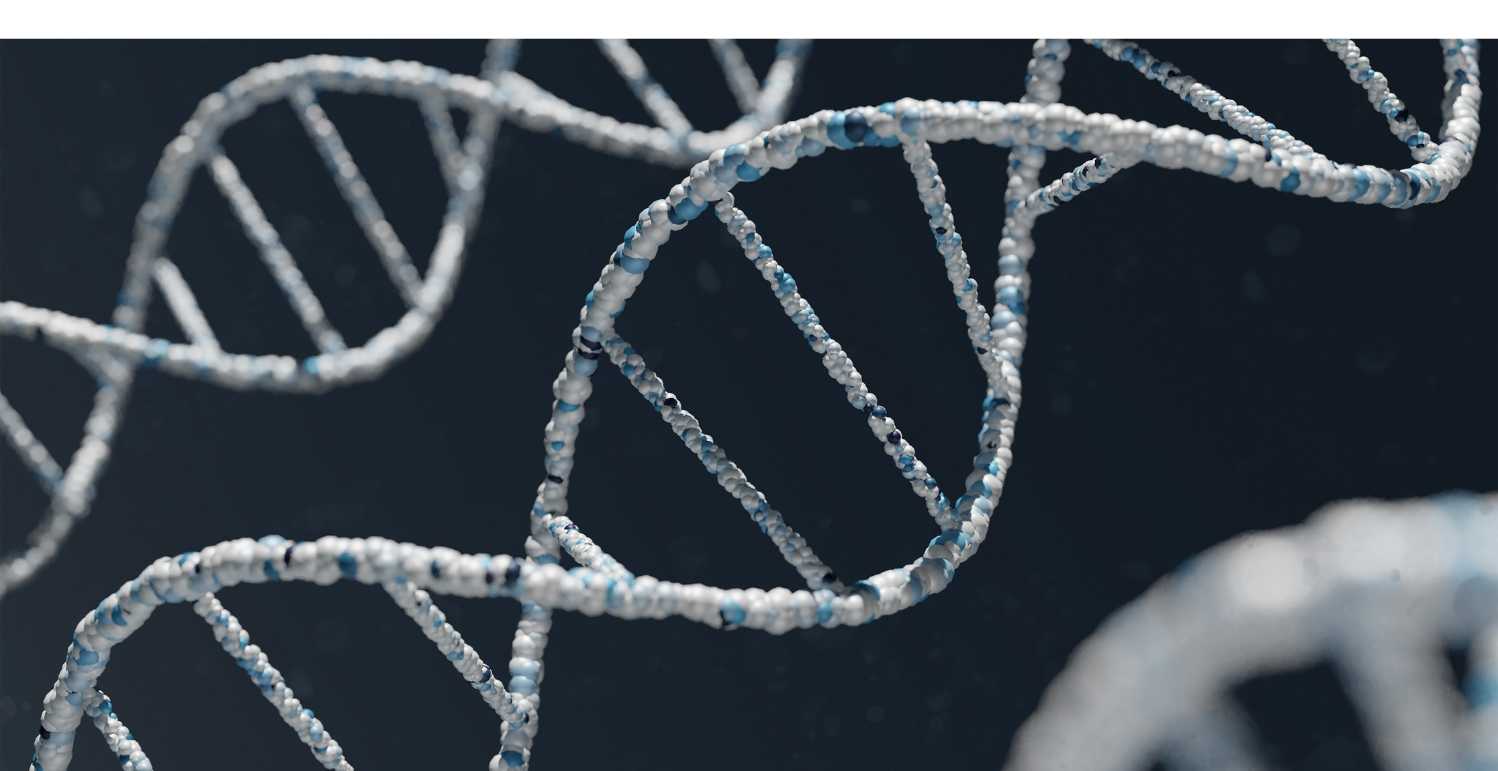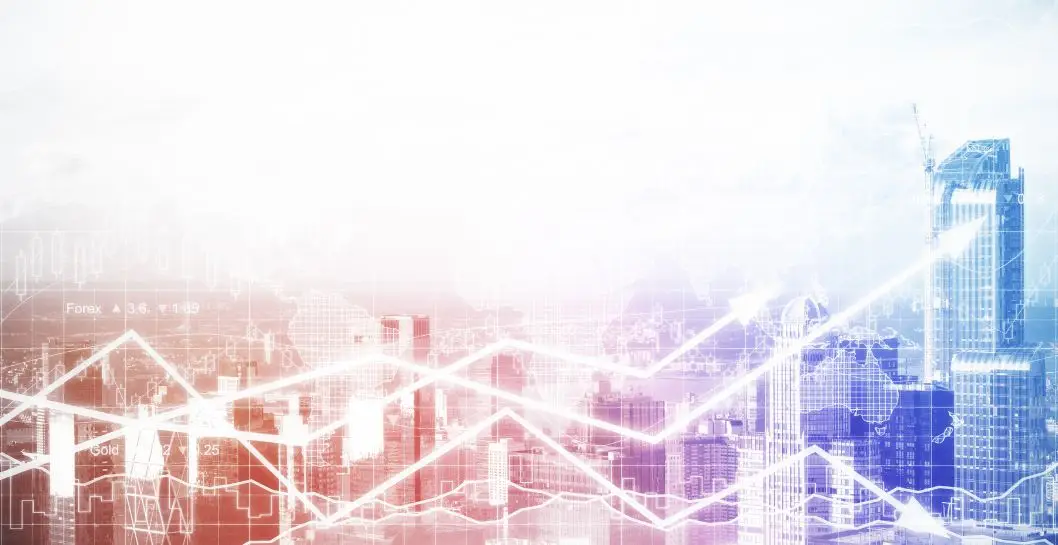Insights
5 Reasons Why Biostatisticians Will Be a Crucial Hire in 2025
19 Jun, 20227 minutesBiostatistics is a prominent field within biometrics and healthcare recognized for its impor...

Biostatistics is a prominent field within biometrics and healthcare recognized for its importance and potential. With projected increases in funding and salaries, the demand for biostatisticians is clear. Their expertise in analyzing biological data is already vital in healthcare, and with ongoing societal, technological, and regulatory changes, their importance will only increase.
In this guide, we will explore the key reasons why biostatisticians are crucial hires, not just for 2025 but for the future of biometrics.
Advancing Healthcare and Biometric Data
Healthcare is consistently changing, and biostatistical analysis is crucial in these developing trends. Despite a steady supply over the past decade, the demand for biostatisticians is expected to rise significantly. By 2031, this demand will increase by up to 31%.
Vacancies for biostatistician careers have increased by 128.13% nationwide since 2004, making it one of the fastest-growing specialties within statistics.
Biostatistics is experiencing significant growth, particularly in biometrics, with projected funding and salary increases. However, since 2019, the demand for biostatisticians has consistently outpaced supply in the United States. This trend isn't exclusive to the US; nations across the European Union and developing regions are experiencing a similar surge in demand, driven by growing healthcare sectors and increased adoption of biometrics.
The reliance on biostatisticians to deliver tailored results highlights the growing demand for their expertise. Biostatisticians have the specific skillset to design studies, collect data, and interpret these complex datasets to extract meaningful insights. Because of this, securing top talent in this field has never been more crucial before the demand becomes overwhelming.

Top 5 Reasons to Recruit Biostatistical Talent by 2025
Now that we have established the relevance of biostatistical analysis overall and the growth of the field, let's explore the top five reasons why recruiting biostatistician talent by 2025 is essential for the growth of any clinical research team.
1. Explosion of Healthcare Data
The healthcare industry is experiencing an explosion of data sourced from electronic health records, wearable devices, genomic sequencing, and more. This rush of complex information presents a unique challenge and opportunity for analysis. By 2025, the compound annual growth rate of data for healthcare is projected to reach 36%, passing growth rates in other industries like media and entertainment.
Big data analytics is expected to improve the quality of life and reduce operational costs within the healthcare industry. It enables predictive analytics for early disease detection, population health management, precision medicine, and healthcare operational efficiency.
Biostatisticians are increasingly needed to coordinate and interpret this large amount of data effectively. Their role involves developing and implementing statistical models to identify patterns, trends, and relationships within the datasets. By doing so, they contribute to breakthroughs in disease prediction, personalized treatment approaches, and optimizing healthcare resource allocation.
The Changing Roles of Biostatisticians in Healthcare
Though biostatistical analysis is already playing a significant role in managing the surge of healthcare data, its importance is set to rise even further.
The role of biostatisticians is undergoing a profound transformation in response to the exploding volume of healthcare data and the integration of advanced technologies like big data analytics and AI.
If you haven't already hired a biostatistician for your clinical research team, they will be indispensable in 2025.
Here's why:
- Biostats for Healthcare Data: Biostatisticians are in high demand as healthcare data explodes, especially biometrics from wearables and genetic testing. They use data science tools to analyze this data, uncovering hidden patterns that can be used to personalize medicine.
- Biometric Data Analysis: Biostatisticians are experts at handling the massive and complex world of biometric data. They use advanced analytics techniques to extract valuable insights from these datasets. These insights can then be used to make more precise predictions about a patient's health and tailor treatments.
- Developing Biometric Models: Biostatisticians are constantly developing new statistical models that are specifically designed to analyze complex biometric data. These models will allow for a deeper analysis of healthcare trends and patterns, leading to improved healthcare outcomes.
- Optimizing Biometric Data Use: Biostatisticians are crucial in ensuring healthcare gets the most out of growing biometric data. They guide healthcare organizations in making informed decisions about using this data resource best.
In the biometrical and data-driven future of healthcare, biostatistics professionals will become the ones who guide clinical teams through complexities and support meaningful change.

2. Health in Focus
Following the COVID-19 pandemic, there's a clear move towards prioritizing public health solutions, especially for the aging population. With a significant increase in older adults, focusing on strategies for healthy aging and managing age-related health issues is essential. This shift highlights the importance of practical approaches and evidence-based methods to improve public health outcomes.
The number of Americans ages 65 and older is projected to increase from 58 million in 2022 to 82 million by 2050, showing a 47% increase. Additionally, people with chronic conditions account for 81% of hospital admissions. Chronic diseases like heart disease, diabetes, and Alzheimer's become more common among older adults, making it crucial to target interventions and preventive measures.
Clinical initiatives promoting healthy aging, managing chronic conditions, and providing long-term care are essential to address the changing health needs of older adults.
Biostatisticians play a crucial role in supporting public health efforts to tackle the challenges posed by the aging population. Using their expertise in data analysis, evaluation, and predictive modeling, these skilled professionals contribute to:
- Data Analysis and Interpretation: Biostatisticians analyze biometric data collected during public health initiatives (e.g., vaccination campaigns). They identify trends in participation rates across demographics and develop targeted interventions to address disparities in access based on biometric identification patterns.
- Biometric Monitoring: Biostatisticians analyze data from wearables (fingerprint/facial recognition) to evaluate chronic disease programs for older adults, tracking biometrics like heart rate and sleep to assess program effectiveness.
- Predictive Modeling: Biostatisticians use biometrics (gait, vitals) alongside traditional data to predict healthcare needs and the impact of aging on public health, informing proactive planning and targeted biometric monitoring tools for at-risk patients.
Future Role of Biostatisticians
Biostatisticians will be vital for addressing the health needs of people with chronic illnesses and aging populations. Their expertise in data analysis will help healthcare teams grasp trends in these conditions, enabling effective planning and response.
Biostatisticians’ roles will also become more focused on creating tailored interventions to enhance health outcomes for these groups. Hiring these skilled professionals will improve healthcare delivery to those in need.
3. Precision and Personalized Medicine
Precision and personalized medicine are experiencing unprecedented growth. Global spending on precision medicine treatments is projected to reach $82 billion by 2027, a significant 150% increase from 2022 figures. Projections suggest that the global personalized medicine market will grow past approximately USD 1233.23 billion by 2033.
As the precision and personalized medicine field expands incredibly quickly, it's clear that traditional one-size-fits-all healthcare methods are no longer adequate. Looking ahead to 2030, precision medicine is becoming increasingly crucial with increasing amounts of technological advancements and developing medical needs. From this, healthcare organizations face the challenge of customizing treatments for each patient using data-driven approaches.
Biostatisticians play a crucial role here. They possess the skills to unravel complex data, discern subtle patterns, and extract valuable insights to enhance patient outcomes.
Let’s discuss how these key professionals continue to contribute to this growing healthcare field.
Critical Functions of Biostatisticians:
- Data Analysis Expertise: Biostatisticians excel at untangling intricate datasets and identifying patterns essential for personalized treatment decisions.
- Trial Design Proficiency: Their skill in setting up clinical trials helps confirm new personalized treatment methods, building a base for healthcare practices that rely on solid evidence.
- AI Integration Leadership: Biostatisticians are crucial in bringing advanced AI and machine learning tools into patient care processes, making care more precise and efficient.
- Risk Stratification Expertise: Biostatisticians use sophisticated data analysis to spot high-risk patients, helping to take early action and tailor treatments to prevent complications.
- Communication and Collaboration: Biostatisticians make complex data understandable and practical, working with different experts to advance personalized medicine projects.
The Importance of Biostatisticians in Targetted and Precision Healthcare
Biostatisticians are becoming increasingly important in the fields of precision and personalized medicine. Their skills in analyzing data, designing trials, and explaining results help develop healthcare tailored to individual patients, ensuring treatments are based on solid evidence.
Currently, standard pharmaceutical treatments only work for 30-60% of patients. This shows a big gap that personalized medicine aims to fill by creating treatments that match individual genetic backgrounds, environments, and lifestyles.
Biostatisticians are shifting towards personalized medicine by analyzing healthcare data, including detailed biometrics like dietary trackers and activity monitors. With data science tools, they uncover patterns in individuals' biometrics, which helps predict effective treatment approaches. This leads to personalized care plans and potentially better health outcomes for patients.
As we move forward, the role of biostatisticians will only grow as technology and data collection become more advanced. They are crucial for developing precise medical therapies and continuously improving them based on ongoing analysis of patient outcomes. This makes biostatisticians central to advancing healthcare in the future and makes them critical players in all aspects of biometric data in 2025.

4. Increasing regulations
Over the past decade, clinical trials have adapted to meet the growing demands of regulatory bodies, law enforcement agencies, and healthcare professionals. While technological advancements have streamlined certain aspects of drug, treatment, and medical device development, tighter regulatory oversight has emerged due to the advent of precision medicine, more invasive treatments, and entirely new therapies.
Several factors contribute to the tightening of government regulations around treatment development and approval:
- Public Safety Concerns: Due to past incidents with unsafe medications, regulations are stricter to protect public health, including measures for securing and safeguarding biometric data.
- Ensuring Biometric Device Efficacy: Regulations ensure that approved biometric devices work as intended, preventing unreliable devices and ensuring patients get accurate biometric measurements.
- Transparency and Accountability in Biometric Research: Rules promote clear and ethical biometric data collection, building trust and holding stakeholders accountable.
- Advancing Biometric Science: Regulations adapt to new biometric advancements to maintain data reliability and accuracy in healthcare.
- Global Standardization: Regulators worldwide work together to make rules consistent for biometric data, simplifying device approval and ensuring global access to safe biometric tech.
The Role of Biostatisticians in Regulatory Navigation
Biostatisticians play a significant role in navigating changing government regulations for the development and approval of technologies like wearable devices. Their expertise ensures clinical trials adhere to regulatory standards, determine appropriate sample sizes, maintain data quality, manage risks, and support stakeholder collaboration.
By analyzing population-level data and evaluating public health interventions, biostatisticians inform policy decisions to improve health outcomes and reduce healthcare disparities. Initiatives like the Limited CMC Development and Readiness Pilot (CDRP) and the FDA's focus on diversity and inclusion in clinical environments highlight the importance of biostatisticians in driving compliance and innovation within the healthcare industry.
These regulatory developments have significant implications for stakeholders across healthcare, from pharmaceutical companies and research institutions to patients.
Staying compliant with developing regulations is critical to upholding the accuracy of clinical trial data and meeting standards. These regulations reflect a unified effort to enhance healthcare safety, efficacy, and inclusivity in the US. Hiring a biostatistician is crucial for ensuring adherence to these regulations and maintaining the integrity of clinical trials.
5. Increasing Interdisciplinary Collaborations
In modern healthcare, collaboration across disciplines reshapes how we tackle complex health issues. Traditionally, healthcare operated in isolated units, with specialists focusing solely on their subject areas.
However, as we've come to understand the limitations of this approach, there's been a change in attitude towards interdisciplinary teams. These teams bring together professionals from various fields, including doctors, nurses, therapists, social workers, pharmacists, and biostatisticians, to provide more comprehensive care.
This collaborative approach has clear advantages, including:
- Enhanced Patient Care: By integrating insights from different disciplines, interdisciplinary teams develop care plans that address all patient health aspects. This approach leads to better patient outcomes and improved quality of life.
- Reduced Errors: With diverse perspectives and expertise, interdisciplinary teams are better equipped to identify and prevent potential errors or oversights. This results in enhanced patient safety and a higher standard of care.
- Improved Communication: Collaboration supports more transparent communication among healthcare providers and patients. When professionals from various backgrounds come together, everyone involved in a patient's care is well-informed and aligned in their approach.
Biostatisticians are indispensable members of interdisciplinary healthcare teams. Their statistical analysis and research methodology expertise make them uniquely qualified to contribute to various aspects of patient care and medical research. Let’s explore how.
Data Analysis
Biostatisticians collaborate with clinicians and researchers to analyze large amounts of medical data, including patient records, clinical trial results, and population health data. Identifying patterns and trends within this data provides valuable insights that inform clinical decision-making and treatment strategies.
For example, biostatisticians and oncologists may study cancer patient data to identify factors associated with treatment response and survival rates. This information can help clinicians tailor treatment plans to individual patients, maximizing effectiveness and minimizing side effects.
Research Collaboration
Biostatisticians play a crucial role in designing and conducting clinical trials. They collaborate with clinicians and researchers to develop study protocols, determine sample sizes, and analyze trial data to evaluate the safety and efficacy of new treatments.
Biostatisticians may design randomized controlled trials in collaboration with pharmaceutical companies or academic researchers to evaluate the effectiveness of a new drug in treating a specific condition. Biostatisticians help produce reliable evidence that informs clinical practice and regulatory decisions by ensuring accurate study design and statistical analysis.
Cost-Effectiveness Analysis
Biostatisticians collaborate with healthcare administrators and policymakers to assess the cost-effectiveness of different treatment options. They evaluate various interventions' potential costs and benefits, considering treatment efficacy, patient outcomes, and resource utilization.
For example, in collaboration with hospital administrators, biostatisticians may analyze healthcare utilization data to evaluate the cost-effectiveness of implementing a new healthcare program or intervention. By providing evidence-based recommendations, biostatisticians help healthcare organizations allocate resources efficiently and improve patient care delivery.
As biometrics and healthcare continue to acknowledge the benefits of better interdisciplinary collaboration, biostatisticians are essential for using data and research correctly to drive innovation and improve patient care. Their expertise enables them to collaborate effectively with clinicians, researchers, and healthcare administrators across different areas.
If clinical research teams are planning to work on large or multidisciplinary projects in 2025, they need biostatisticians

Final Thoughts on Investing in Biostatisticians
The demand for biostatisticians is rapidly growing, making them indispensable players in shaping the future of healthcare. Their expertise is particularly crucial in navigating the complexities of healthcare data, integrating AI technologies, and advancing personalized medicine.
As healthcare becomes increasingly data-driven and interdisciplinary collaboration gains prominence, biostatisticians connect various fields, ensuring that research endeavors result in meaningful insights and innovations. Looking ahead to 2025 and beyond, clinical research teams must recognize the essential role of biostatisticians in driving healthcare innovation and improving patient outcomes.
Are you seeking a specialized Biometric Recruitment Agency?
Our dedicated consultants specialize in biostatistics recruitment and are committed to connecting you with talented candidates in the life science field. We understand that your hiring needs may vary, which is why our global recruitment consultancy service is tailored to accommodate your specific requirements.
Contact us today to discuss how our industry-specific consultants can help you find the right biostatistician for your team.



